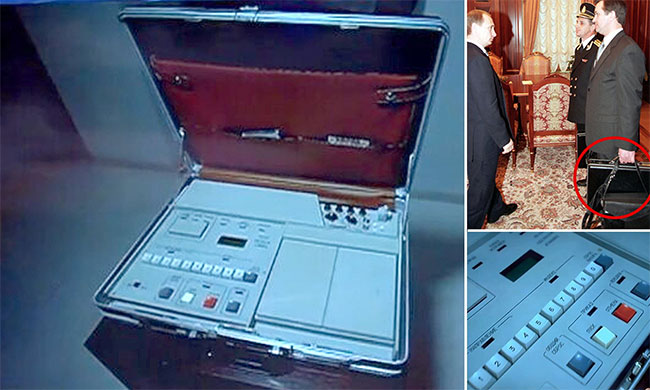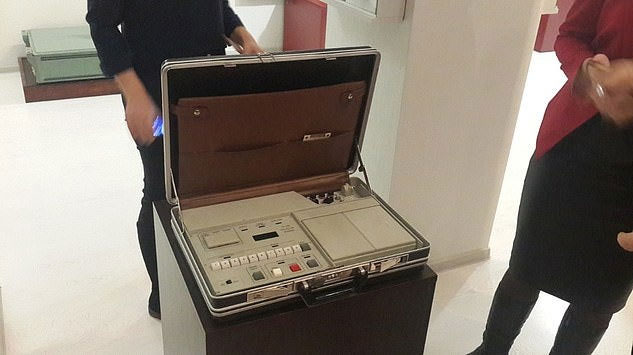While the President of the United States has only one nuclear briefcase to authorize the deployment of nuclear weapons, the Russian military possesses three nuclear briefcases. This difference raises curiosity among many.
Essentially, this is a briefcase filled with everything necessary for the president to authorize and carry out a nuclear attack while he is not in the designated command and control area, such as the White House.

The nuclear briefcase always close to President Putin. (Photo DM)
In the U.S., the president is the sole authority to launch a nuclear attack, whether preemptively or in retaliation. In the Russian Federation, the president’s power is monitored by the military in the event of a nuclear attack.
The Russian Armed Forces have three nuclear briefcases, each associated with three key defense officials in Russia. This system is known as the “three-lock system.” The first nuclear briefcase is always beside the President of Russia, currently Vladimir Putin. The Russian president’s briefcase does not contain actual nuclear codes but instead holds a launch code system.
However, with the authority of the president, Putin cannot unilaterally order a nuclear attack. Instead, in a critical moment, the president’s code must be sent to the Russian Minister of Defense, currently Army General Sergey Shoygu, who has held this position since 2012.
After the Minister of Defense receives the order and launch codes from the president, he will send his own code along with the president’s code to the Chief of the General Staff, currently General Valery Gerasimov. Only when the Chief of the General Staff has all three sets of codes can the order to launch be executed by the missile crews.
It is estimated that the entire process, once initiated, will take about 20 minutes. This process is considered a highly classified state secret from the Soviet era, and much misinformation still exists around it.

The Russian nuclear briefcase. (Photo wearethemighty).
An unconfirmed rumor suggests that the Minister of Defense and the Chief of the General Staff must transmit their own codes to prevent unauthorized access from rebellious military personnel. Another rumor states that the Chief of the General Staff also possesses the president’s code. It is believed that this structure prevents power grabs from the office of the Minister of Defense, thwarting any internal conspiracies against the president.
The active control system for Russia’s nuclear launch capability has undergone several tests and errors. For instance, during the Cuban Missile Crisis, Soviet commanders in Cuba had the authority to carry out a nuclear attack without Moscow’s permission.
Today, that power is firmly in the hands of three long-standing officeholders, with a rudimentary system of checks and balances to ensure that one does not overpower the others.
The three nuclear briefcases can also alert President Putin, Minister Shoygu, and General Valery to signals of a potential nuclear attack.


















































